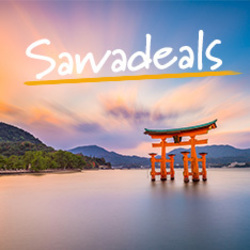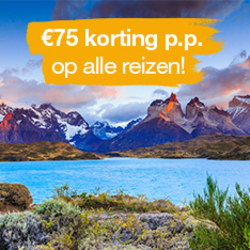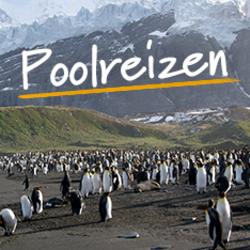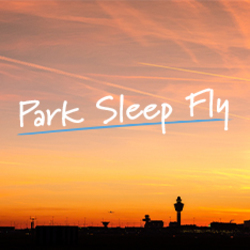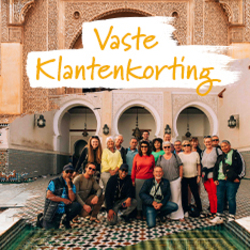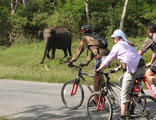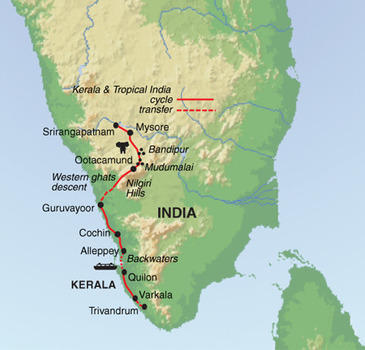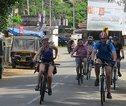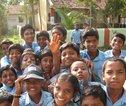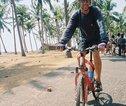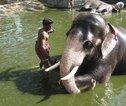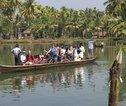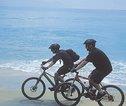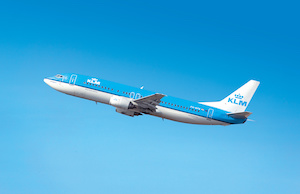Activities
- Cycling
- Road Cycling
- Cycle through striking countryside with tea plantations Discover Hindu temples and Christian churches. Cruise the Keralan backwaters on a traditional houseboat
Food
-
1
Start Mysore.
Those on the group flight arrive in Bangalore and transfer by coach to Mysore, breaking the 3.5-hour journey for light refreshments. If travelling independently, you should meet us in Mysore. After checking into our hotel there will be a short introductory briefing and time to relax (we may have to wait until around noon if rooms are not ready). We will meet at lunchtime and after lunch will have a short walk around the local markets. In the late afternoon, there will be a bike briefing and fitting in the hotel courtyard. In the evening there will be a full trip briefing before an optional group dinner.Hotel Pai Vista or similar (Mysore)
-
2
Ride to Srirangapatnam ruins; return to Mysore; afternoon explore the city including the Maharaja Palace.
We start with a leisurely morning ride to Srirangapatna, the ruins of Tippu Sultan's capital which were destroyed by the British in 1799 during their final battle to secure control of southern India. The fortress stands on an island in the middle of the Cauvery River, and once over the bridge we cycle around the old ramparts, enter Tippu Sultans Mosque and the Ranganathaswamy Temple before riding back to Mysore for lunch. Today for lunch you get your first taste of 'thali’ - the southern Indian meal of rice and multiple small portions of curries on a plate, or the typical south Indian ‘masala dosa’, a thin pancake made with fermented rice and lentil batter. In the afternoon we have a guided tour around Mysore Palace. Also known as the Amba Vilas Palace, it is the official residence of the Wodeyars – the former royal family of Mysore, which ruled the princely state of Mysore for over seven centuries. The Wodeyar kings first built a palace in Mysore in the 14th Century; it was demolished and constructed multiple times. The current palace construction was commissioned in 1897, completed in 1912 and expanded later around 1940. The décor is simply stunning, if a little bit over the top, and the former maharaja is still in residence in his private quarters. Hotel Pai Vista or similar (Mysore)
-
3
Cycle on the back roads of Mysore Plateau to Nanjangud; transfer to Bandipur N.P.
We leave the hotel and cycle out of Mysore town up to Chamundi Hill to view the huge 5m rock carving of Nandi, Shiva's celestial Bull. There are also good views over the whole of Mysore. We then cycle back down the hill and continue along the quiet backroads, along with the children riding a bike or bus to school. We also share the road with herds of white oxen and women in colourful saris carrying water pots on their heads. We arrive at the important pilgrim centre of Nanjangud, home to the beautiful 9th Century Srikanteshwara Temple dedicated to Shiva. We have a tea break here with the chance to look around the temple whilst the bikes are loaded onto the bus. We then drive for an hour along a busy road leaving the plains for the forested foothills of the Western Ghats – once the hunting preserve of Mysore's Maharajas, staying close to Bandipur National Park. We should arrive at our hotel in the Bandipur National Park in time for lunch, but if not we will have something en-route. In the late afternoon we take a jeep safari in the park. We will see lots of peacocks, spotted deer and monkeys, with the chance to see wild elephants, Indian Bison and of course the elusive tiger. These can be spotted at certain times of the year. The Wildflower Resort & Spa or similar
-
4
Ride to Mudumalai N.P; free time
After breakfast we go for a short circular ride along the villages outside the forest areas to witness the local farming village life. This ride is followed by a tea break before we transfer by jeep to our resort. The afternoon is free to relax at our resort. Later in the afternoon, there will also be the opportunity to go on a village walk on the outskirts of the forest and visit a local farmhouse, where you could join a local family for Tea.Jungle Mount or similar
-
5
Optional ascent to Ooty hill station (13km climb), former summer capital of the Raj; free afternoon to explore the town.
For some, today is the highlight of the trip, ascending 1251m to Ooty (Ootacamund), an Indian hill station and the former summer capital of the Raj. It’s a very steep ride up 36 hairpin bends with stunning vistas at every turn, and there's an immense sense of achievement at the summit. Although steep, there are plenty of photographic opportunities that provide a resting spot. Alternatively, enjoy a relaxed morning and journey up the hill in the support vehicle. After tea and cake at the top we have an undulating ride into Ooty. Set at an altitude of 2177m, the cool climate of the Nilgiri Hills gives us a break from the hotter plains below. Arriving late morning, we take lunch in our comfortable hotel. The afternoon is free to explore the town and to sample some of their famous cardamom tea. Ooty is called the ‘Queen of the hill stations’ and although it is now a busy little town there is lots to see and do. Originally occupied by the tribal Todas, the area came under the East India Company at the end of the 18th Century. The British introduced tea to the area, and the hillsides around Ooty are covered in tea gardens. The Nilgiri Hills are called the ‘Blue Mountains’, the blue colour coming from the many eucalyptus forests surrounding the area. Both the Botanical Gardens and the Rose Gardens are a short walk from our hotel. In the town there are many shops selling locally grown tea and oils and homemade chocolate. If there is time and it is running, there is sometimes the chance to go for a ride on the UNESCO listed Nilgiri Mountain Railway, a steam train built by the British (your leader will give you details at lunchtime if this is possible). Fortune Resort Sullivan Court or similar
-
6
Western Ghats descent through tea plantations; transfer to Guruvayoor in tropical Kerala.
After breakfast we have a stunning ride across the rolling Nilgiri Hills, the backdrop for many Bollywood movies, before starting the dramatic descent, dropping 2000m through the hills and tea-covered slopes of the Western Ghats. The ride offers fantastic views over the hills below and there are some viewpoints that should not be missed. 54km later we reach Gadalur, a typical Indian town with one long high street selling everything, its shop-fronts covered with colourful adverts and cheap children's toys. Here we have a tea break before heading towards Kerala with the final 20km descent through tropical rain forest and bamboo covered slopes to our end point at a typical Keralan roadside restaurant. The bikes are loaded whilst we enjoy lunch and then transfer to Guruvayoor (3.5 hours) to avoid busy roads. (Please note that although the road is not very busy the road surface today is probably the worst of the trip. There are many potholes and the road surface is not even. Please take care and concentrate whilst cycling). Arriving in Guruvayoor, we have time to relax before wandering into town to sample delicious Keralan street food and have an evening stroll outside the temple, which comes alive at night. It is one of the most important places of worship for Hindus in Kerala and the fourth largest temple in India. The town is filled with devotees dressed in traditional Keralan costume who come here in their thousands to offer rice, flowers and gold to Lord Krishna, an incarnation of Lord Vishnu. The ritual starts with bathing in the temple pond, then lighting an oil lamp on the huge 7m-high pillar of light, just in front of the heavy temple doors – a truly beautiful spectacle. Only Hindus are allowed beyond this point.Sopanam Heritage or similar
-
7
Morning ride past Guruvayoor Temple and Palayur church; continue to our beachside hotel in Cherai.
Today we cycle by the Shree Krishna Temple. A few kilometres further is another religious centre, Palayur Church, which is one of the oldest churches in India and founded by the apostle St Thomas, who landed in India in AD 52. From here we head towards the coast, cycling along country roads lined with mango and coconut trees. There are plenty of photo opportunities as we observe traditional life. Later, crossing bridges we cycle onto Vypin Island, arriving at Cherai Beach early afternoon. The rest of the day is free to enjoy this stunning location and swim in the Indian Ocean. Cherai is known for its mouth-watering fresh seafood, so for dinner, you could try the Jhinga Kachcia Aam Kari, a speciality dish from Kerala made with green mango and prawns simmered in coconut milk and spices. Sea Lagoon Health Resort or similar
-
8
Cycle along coastal roads lined with coconut palms; ferry to Fort Cochin.
We set off from our beach location towards the coast to Cochin, cycling south and passing through small fishing communities with their colourful boats hauled up along the sands. Turning inland, we see grand houses built with the remittance money from the Gulf States workforce, as well as older houses constructed during the British colonial period. Please bear in mind that the traffic levels are high for the last 8km as we arrive at the main road to board the ferry to Fort Cochin (Kochi). This town has a unique place in Indian history, and to soak up the atmosphere we spend the next two nights in Fort Cochin. After check-in at the hotel, we wander down to one of the restaurants in the old harbour area of Kochi for lunch. Those wishing to visit the Indo Portuguese Museum should do so today as it is closed on Mondays. The Dutch Bungalow or similar
-
9
Free day in Cochin to explore the bazaars and the old harbour.
Today is a free day to explore the town of Cochin (Kochi) with its bazaars and old harbour area. Merchants began trading spices such as pepper and cardamom with the Chinese, Arabs and Portuguese more than 600 years ago. The Portuguese established a base here, followed by the Dutch, who were forced to hand it over to the British in 1841. A potpourri of Indian and international communities, it is now the bustling commercial capital of Kerala and consists of several islands connected by ferries. Most of the major sights are close by on Fort Kochi and Mattancherry. Warehouses filled with the smell of tea and spices are lime-washed bright green, yellow and blue; rickety old bikes and hand-painted trucks piled high with goods fill the narrow streets and food stalls stand on every corner. St Francis Church is close to the hotel – built by the Portuguese in 1503 it is the burial place of Vasco de Gama and his tomb is inside the church. Further along, you come to Mattancherry and the Dutch Palace. Constructed by the Portuguese in 1568, it was gifted to the Maharaja of Kochi before the Dutch took it over. Close to the palace is Jewtown and the Paradesi Synagogue. Built in 1568 for the Jewish members of Kochi’s trading communities, it is adorned with hand-painted tiles from China and elegant Belgian chandeliers, all donations from wealthy merchants. The area around the synagogue, Jew Street, is a heritage zone with many antique and handicraft shops and is excellent for shopping. For a culinary experience, you should try the fish market near the Chinese fishing nets, where you can buy the day's catch and have it cooked to your own taste. There are also plenty of shopping opportunities here.The Dutch Bungalow or similar
-
10
Cycle past old Portuguese houses; continue to Vambanad Lake and Muhamma.
Riding out from Fort Cochin we pass 500 year old Portuguese villas, a striking contrast to the tiny fisherman's huts dotted along the beach road with their long wooden boats pulled up under the palm trees and nets hung out to dry. Many of these fishing villages are Christian; at Arthungal the old stone church dominates its surroundings and is best viewed from the shade of a coconut tree whilst we have a tea break. Continuing along the coast road we head to Muhamma, famous as the start point for backwater trips. We spend the night in a backwater resort overlooking the lake. The tranquil gardens are as relaxing as the Ayurvedic massage and treatements on offer to its guests. In the afternoon and early evening, relax on the veranda as backwater life unfurls before you. Deshadan Backwater Resort or similar
-
11
Explore Muhamma town before backwater boat trip; overnight on Keralan houseboat.
After a lie-in you can enjoy an optional 22km bike ride to explore the village, or alternatively, you can relax for the morning. Around midday we board a fabulous backwater houseboat for an unforgettable trip to Trikunnapuzha. These converted rice barges have 2-berth cabins with en-suite bathrooms and come with their own cook. With our bikes stacked on the side of the boat you won't see the saddle for another 19 hours, so just relax and watch the world go by. Vessels of all sizes use the lakes and canals that make up this fascinating network of waterways. The smaller boats ferry passengers and goods between tiny hamlets perched on narrow spits of land. On one side of the canal vast paddy fields of iridescent green stretch as far as the eye can see; on the other are fishing nets and coconut trees. As the sun begins to set, the boats are moored together and we gather on deck for sundowners. Overnight Houseboat
-
12
Cliff-top ride to laid-back Varkala.
We have breakfast on the houseboats as they move from their overnight mooring point to our disembarkation point. Here we meet the support vehicle and set off along a quiet coastal road to the Valaazhikal ferry crossing. We load the bikes on a local fishing boat to cross the river estuary and pass by Amrithanadamayi Ashram, better known as the Hugging Mama Ashram, a spiritual retreat overlooking the backwaters. We then join the main road to Quillon and have lunch at a seaside guesthouse: the fish is bought fresh from the market and cooked in mild spice and served with Poratta, a favourite Keralan bread. After lunch we are back on quiet roads for the last 30km to Varkala, a small laid-back community with coffee bars and yoga schools perched along its cliff-top. We spend the next two nights here. Deshadan Cliff & Beach Resort or similar
-
13
Free to relax on the beach and try delicious seafood.
Today is a full free day to relax and enjoy the beachside location. There are a number of beach shack restaurants for lunch which serve excellent seafood. Try some of the Tandoori dishes – the clay ovens give a more authentic taste to breads and curries. The last night's meal is generally at the hotel with a fusion of all your favourite Keralan dishes.Deshadan Cliff & Beach Resort or similar
-
14
End Varkala.
Those on the flight inclusive package will be transferred to Trivandrum airport early in the morning for the daytime flight back to London. Land Only arrangements will finish after check-out from the hotel.




